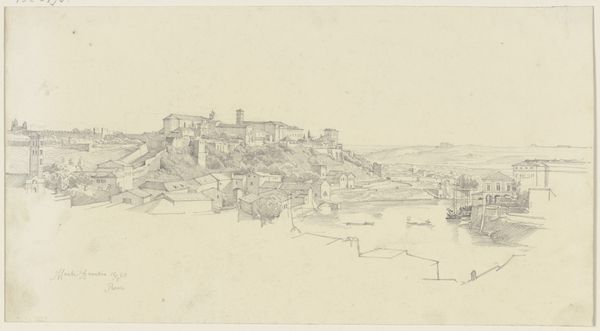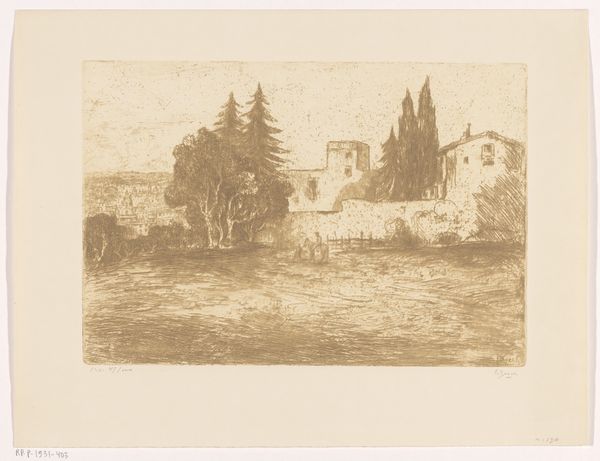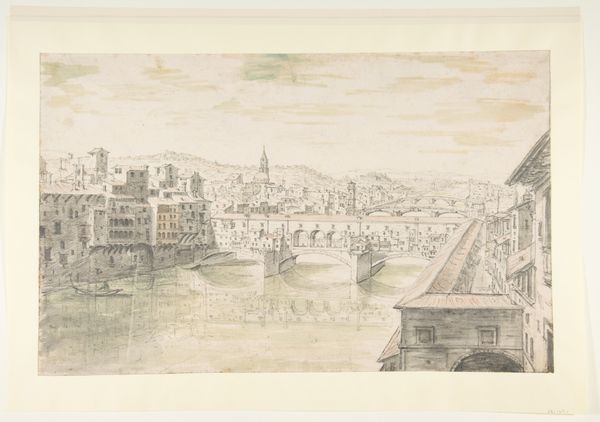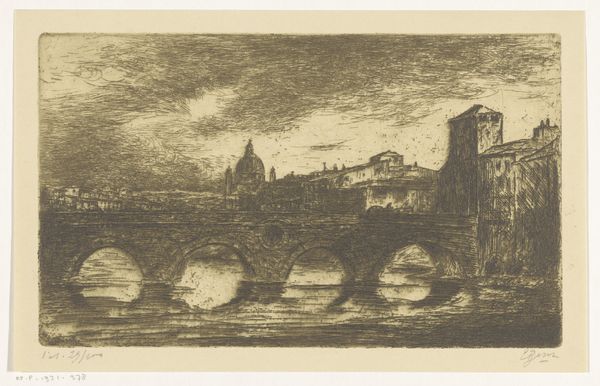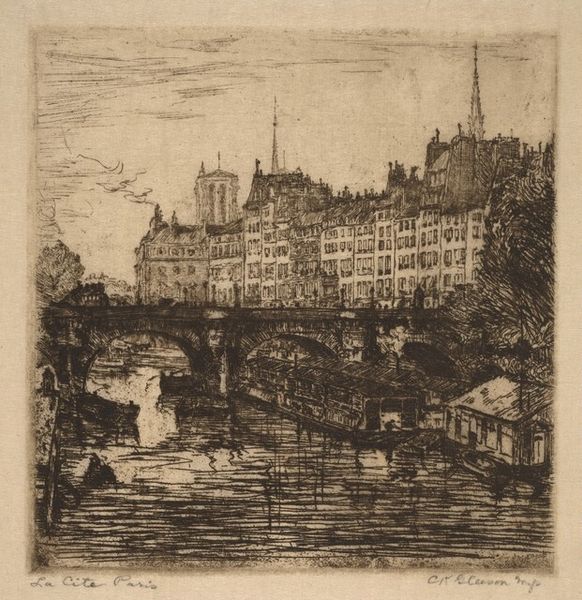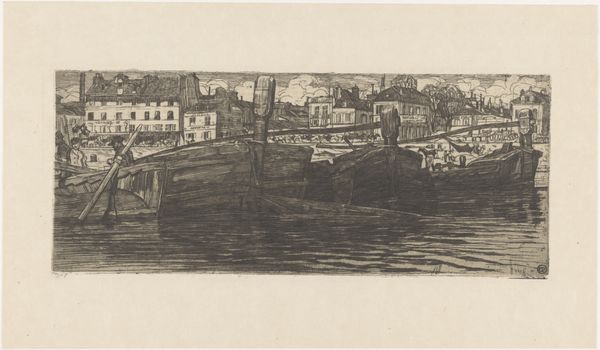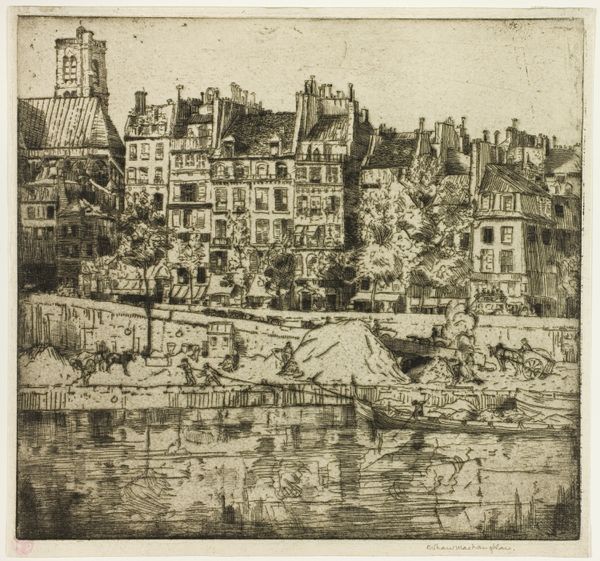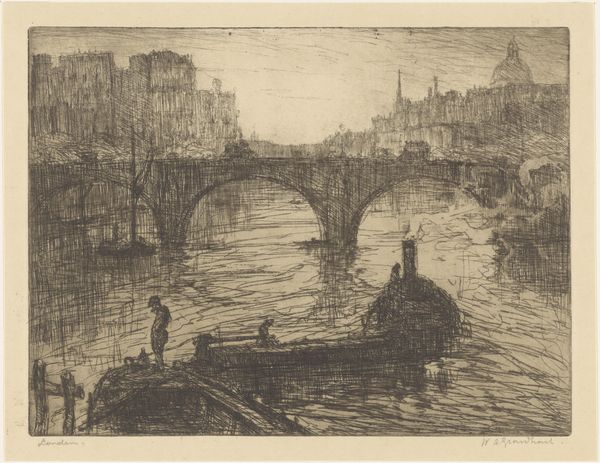
print, etching, engraving
# print
#
etching
#
landscape
#
etching
#
cityscape
#
italian-renaissance
#
engraving
#
realism
Dimensions: height 130 mm, width 231 mm, height 155 mm, width 257 mm
Copyright: Rijks Museum: Open Domain
Curator: Welcome! Here we have “Stadsgezicht Rome,” or “Cityscape Rome,” an etching by Etienne Bosch created before 1931. What strikes you first about this piece? Editor: The shimmering quality! All those tiny etched lines create a sense of light dancing on the water and across the buildings. It's really quite captivating. It reminds me a bit of Piranesi. Curator: You know, considering its likely creation during the rise of Fascism in Italy, this idyllic river scene could function as a sort of visual resistance, turning towards humanist values against oppressive militarism. Editor: Absolutely! That makes sense considering the cultural weight Renaissance cityscapes have generally held. I also see how the bridge connecting different parts of the city is represented as an almost hopeful element—connecting lives despite historical divisions. Curator: Bridges do serve as potent symbols, culturally. And this technique of etching is not unlike practices of collective memory making; layers of experience accumulate into what seems natural or inevitable—though each scratch tells a story of force meeting surface. What would you say is emphasized here through Bosch's rendering of architecture? Editor: Looking at the church steeple, for example, or the way those stacked houses rise along the bank... these details definitely give off traditional cultural power, emphasizing legacies passed down from ancestors through symbolic association with this site and location over time. Curator: It makes me wonder, with the almost complete lack of people on the river or streets, if Bosch is commenting on feelings of loneliness or a disruption of society experienced during his time—a common feeling of alienation from larger socio-political forces. Editor: And I'd say, too, those nearly empty boats floating by echo themes about journeys toward potential futures—or maybe just trying desperately get somewhere else amidst historical change. Curator: Yes, well, I can say that seeing art like this helps illuminate connections and contradictions. Thanks for engaging! Editor: It was my pleasure. Discovering meanings behind images really opens our understanding!
Comments
No comments
Be the first to comment and join the conversation on the ultimate creative platform.
